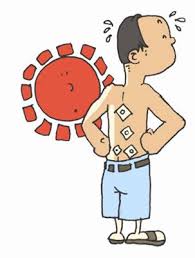Acupuncture for chronic functional constipation both in adult and children
Constipation is a symptom occurring in many diseases or conditions. In the general population rates of constipation varies from 2–30 % [1]. In elderly people living in care homes the rate of constipation is 50–75 % [2]. Except mechanical causes, most causes are functional chronic functional constipation and associated with decreased quality of life, include diet, hormonal disorders such as hypothyroidism, side effects of medications, and rarely heavy metal toxicity.
Treatments for constipation include changes in dietary habits, laxatives, enemas, biofeedback, and in particular situations surgery may be required. Several systematic reviews, case studies and clinical trials support the use of acupuncture as a sustainable option for chronic functional constipation [3-9].
A study in 2001 has investigated the effectiveness of acupuncture on chronic constipation in children [3]. Seventeen children constipated for at least six months were treated by 10 weekly true acupuncture sessions. The frequency of bowel movements increased gradually and reached a maximal improvement only after 10 true acupuncture sessions, from 1.4 +/- 0.6/week to 4.4 +/- 0.6/ week in male and from 1.4 +/- 0.3/week up to 5.6 +/- 1.2/week in female.
A very recent clinic trial of acupuncture for the treatment of chronic severe functional constipation was published last week, Sep 13, 2016 [9]. This is a multicenter trial with 1075 patients involved. It consisted of 8 weeks of treatment and 12 weeks of follow up without treatment. Each participant had a 50% chance of blindly receiving Electronic Acupuncture treatment and the other half were given sham Acupuncture, which would not have a great effect on them if any at all. During the study period, each participant kept journals to track their progress or lack thereof. The results have shown significantly improved quality of life and alleviated symptoms in patients around the 8-week mark and maintained this way throughout their 12 weeks follow ups. The patients who were administered Electronic Acupuncture had a more normalized bowel function along with: increased weekly spontaneous bowel movements, improved stool consistency, less defecation straining, lower scores in the Patient Assessment of Constipation Quality of Life questionnaire, and less need for the use of rescue medicine.
Reference:
- Andromanakos N, Skandalakis P, et al. Constipation of anorectal outlet obstruction: Pathophysiology, evaluation and management. Journal of Gastroenterology and Hepatology. 2006.21 (4): 638–646.
- Canadian Agency for Drugs and Technologies in Health (Jun 26, 2014). “Dioctyl Sulfosuccinate or Docusate (Calcium or Sodium) for the Prevention or Management of Constipation: A Review of the Clinical Effectiveness”.
- Broide E, Pintov S, et al. Effectiveness of acupuncture for treatment of childhood constipation. Dig Dis Sci. 2001 Jun;46(6):1270-5.
- Rafiei R, Ataie M, et al. A new acupuncture method for management of irritable bowel syndrome: A randomized double blind clinical trial. J Res Med Sci. 2014 Oct;19(10):913-7.
- Jiang J, Yi Y, et al. Acupuncture: a good choice to patients with intractable slow-transit constipation. Int J Colorectal Dis. 2015 May;30(5):721-2.
- Li MK, Lee TF, et al. Complementary effects of auricular acupressure in relieving constipation symptoms and promoting disease-specific health-related quality of life: A randomized placebo-controlled trial. Complement Ther Med. 2014 Apr;22(2):266-77.
- Zhang T, Chon TY, et al. Efficacy of acupuncture for chronic constipation: a systematic review. Am J Chin Med. 2013;41(4):717-42
- Lu W, Rosenthal DS. Acupuncture for cancer pain and related symptoms. Curr Pain Headache Rep. 2013 Mar;17(3):321
- Liu Z, Yan S, et al. Acupuncture for Chronic Severe Functional Constipation: A Randomized, Controlled Trial. Ann Intern Med. 2016 Sep 13





